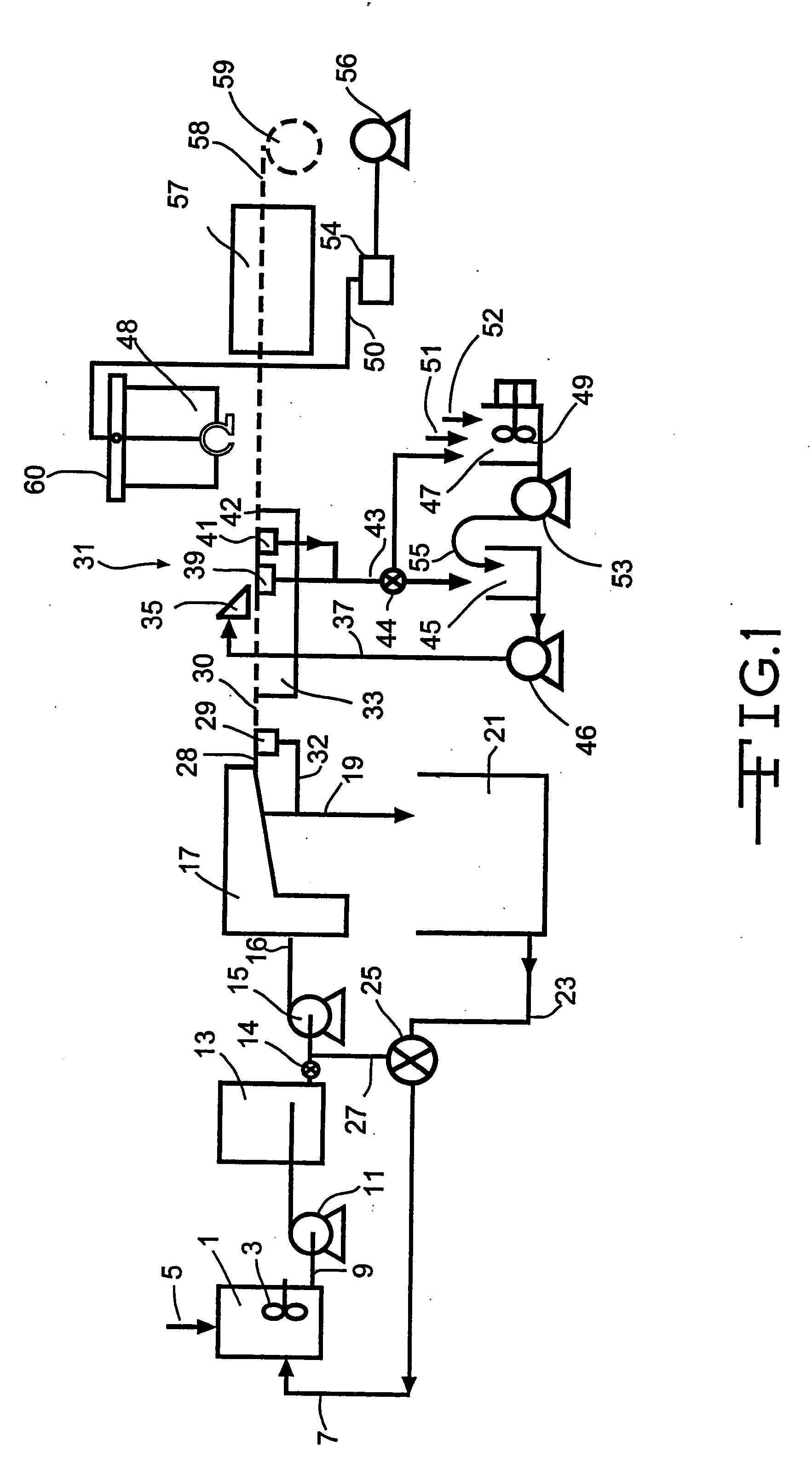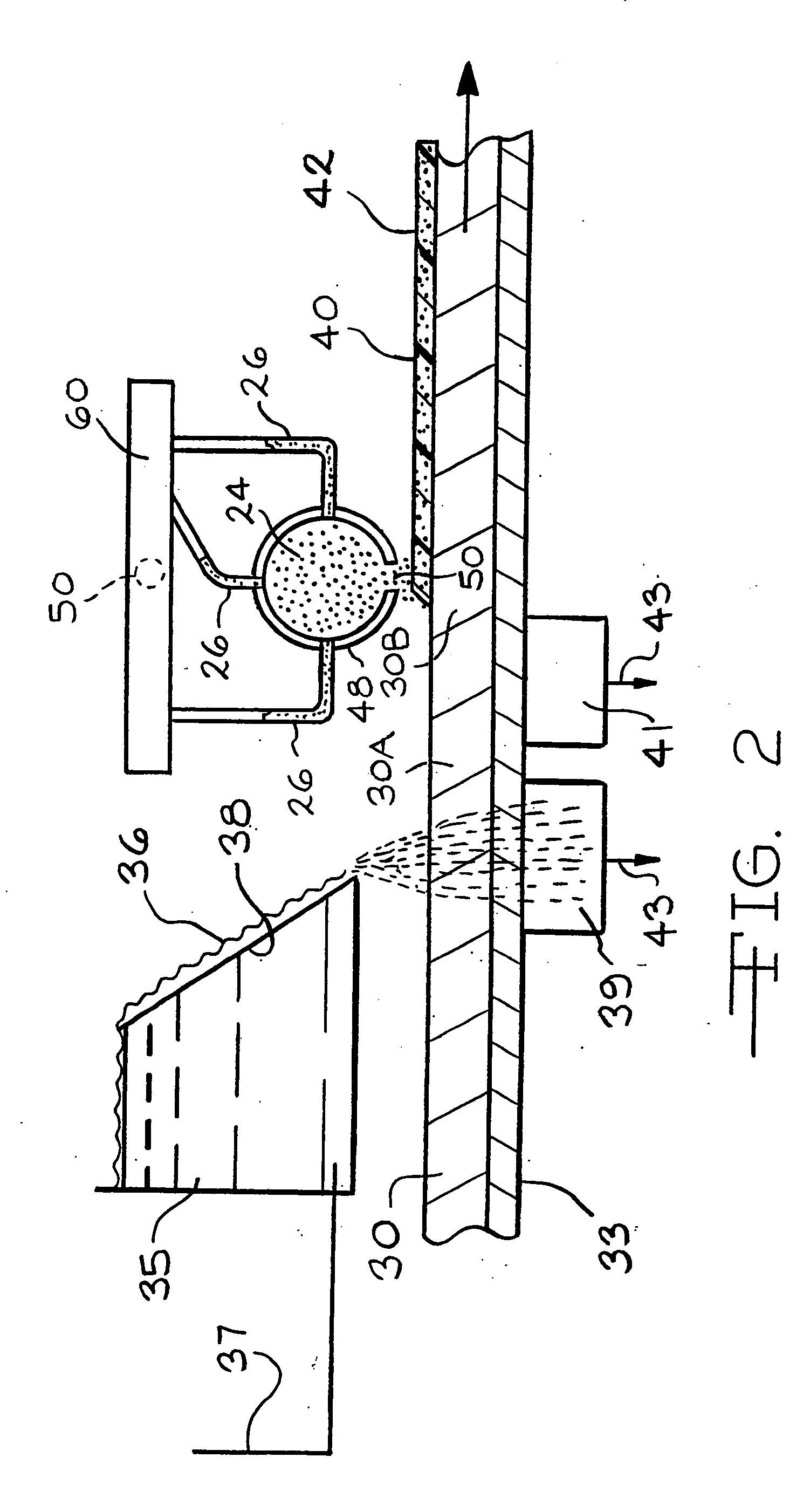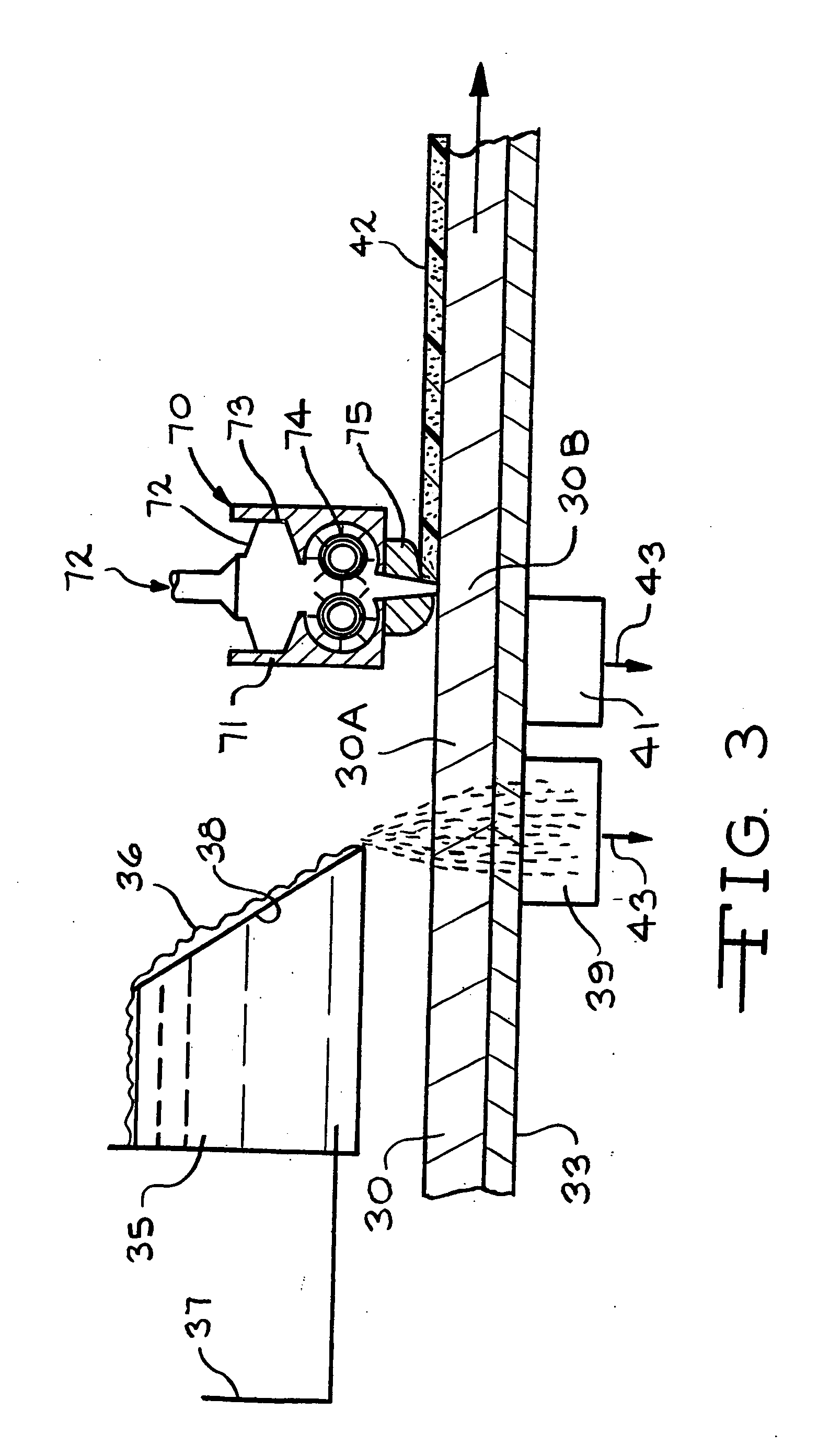Method of making foam coated mat online and coated mat product
a technology of foam coating and foam coating, which is applied in the direction of lamination control, weaving, application, etc., can solve the problems of irritating the hands and arms of workers handling and installing insulating board products, process breakouts adding to production costs, and difficult folding around the edges of boards, etc., to achieve low cup weight, high blow ratio, and low permeability
- Summary
- Abstract
- Description
- Claims
- Application Information
AI Technical Summary
Benefits of technology
Problems solved by technology
Method used
Image
Examples
example 1
[0044] A wet web was formed in a conventional wet process on a laboratory wet former simulating a Voith Hydroformer™ line as used and disclosed in U.S. Pat. Nos. 4,637,496 and 5,772,846 using M 117 glass fibers one inch long. A fiber slurry was prepared in a well known manner by adding one inch long E glass type M 117 wet chop glass fiber from Johns Manville International, Inc. having a silane containing chemical sizing on the surface, as is well known, to a known cationic white water containing Natrosol™thickening agent available from Aqualon, Inc. of Wilmington, Del., and a cationic surfactant C-61, an ethoxylated tallow amine available from Cytec Industries, Inc. of Morristown, N.J., as a dispersing agent to form a fiber concentration of about 0.8 weight percent. After allowing the slurry to agitate for about 5 minutes to thoroughly disperse the fibers, the slurry was metered into a moving stream of the same whitewater to dilute the fiber concentration to a concentration averagin...
example 2
[0052] Another wet web was formed in the same conventional wet process on a laboratory wet former simulating a Voith Hydroformer™ line as used and disclosed in U.S. Pat. Nos. 4,637,496 and 5,772,846 as used in Example 1. A fiber slurry was prepared in a well known manner by adding 0.75 inch long E glass type K 117 wet chop glass fiber from Johns Manville International, Inc. having a silane containing chemical sizing on the surface, as is well known, to a known cationic white water containing Natrosol™ thickening agent available from Aqualon, Inc. of Wilmington, Del., and a cationic surfactant C-61, an ethoxylated tallow amine available from Cytec Industries, Inc. of Morristown, N.J., as a dispersing agent to form a fiber concentration of about 0.8 weight percent. After allowing the slurry to agitate for about 5 minutes to thoroughly disperse the fibers, the slurry was metered into a moving stream of the same whitewater to dilute the fiber concentration to a concentration averaging a...
example 3
[0063] Example 2 was duplicated except for the type of foam used and the basis weight of the finished mat which in this example was 1.3 pounds per / 100 sq. ft. Also, a non-foam coated, bindered mat of the same kind as the bindered mat used to make the foam coated mat was made as a control. In this example a fluorpolymer was used. The fluorpolymer used was Sequapel NRL available from Omnova Solutions of Chester, S.C. The properties of fluorpolymer foam coated mat and the control mat were as follows: [0064] Control mat LOI—27.6 percent [0065] Foam coated mat LOI—29.1 [0066] Amount of foam addition—about 1.5 wt. percent of finished mat [0067] Permeability of control mat—643 [0068] Permeability of foam coated mat—620 [0069] Dry tensile strength of control mat—87.1 lbs. / 3 in. width [0070] Dry tensile strength of foam coated mat—73.1 lbs. / 3 in. width [0071] Hot wet tensile of control mat—40.3 lbs. / 3 in. width [0072] Hot wet tensile of foam coated mat—33.9 lbs / 3 in. width
[0073] The foam coa...
PUM
| Property | Measurement | Unit |
|---|---|---|
| viscosity | aaaaa | aaaaa |
| viscosity | aaaaa | aaaaa |
| width | aaaaa | aaaaa |
Abstract
Description
Claims
Application Information
 Login to View More
Login to View More - R&D
- Intellectual Property
- Life Sciences
- Materials
- Tech Scout
- Unparalleled Data Quality
- Higher Quality Content
- 60% Fewer Hallucinations
Browse by: Latest US Patents, China's latest patents, Technical Efficacy Thesaurus, Application Domain, Technology Topic, Popular Technical Reports.
© 2025 PatSnap. All rights reserved.Legal|Privacy policy|Modern Slavery Act Transparency Statement|Sitemap|About US| Contact US: help@patsnap.com



